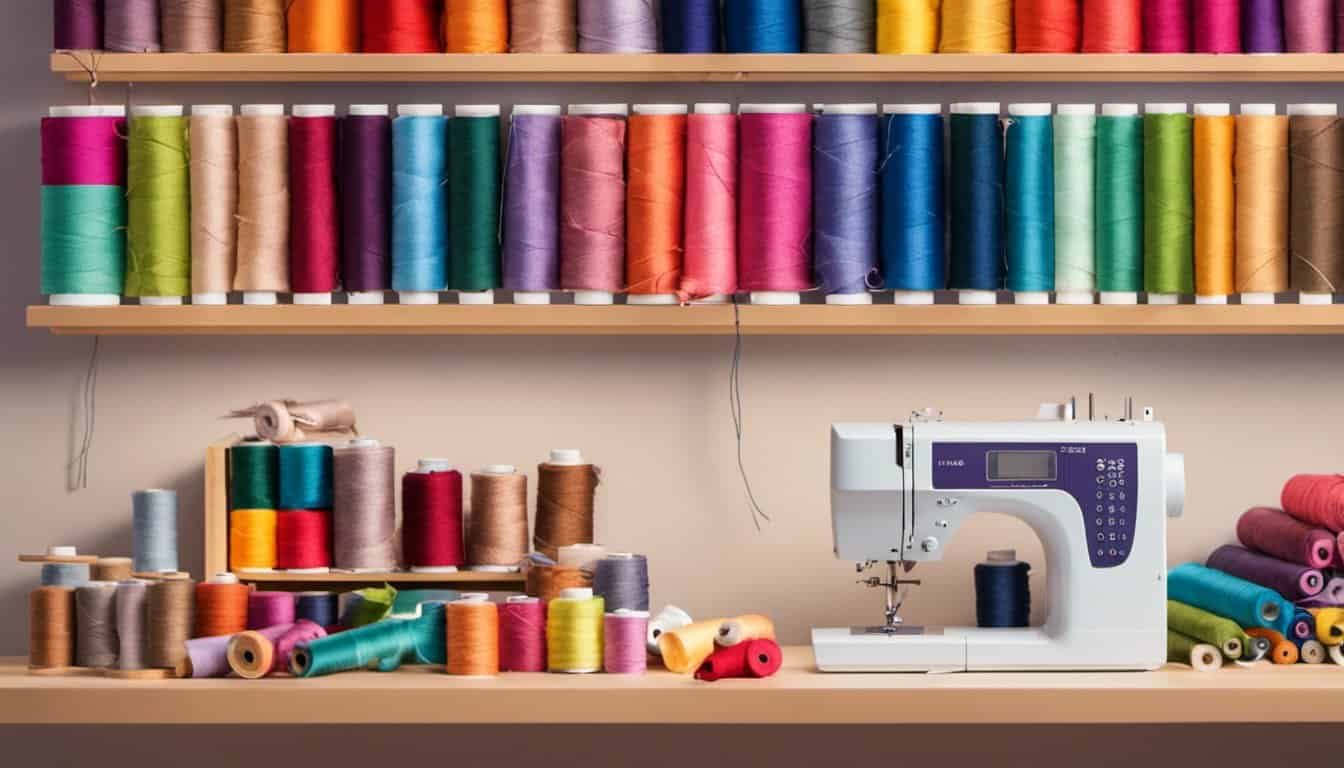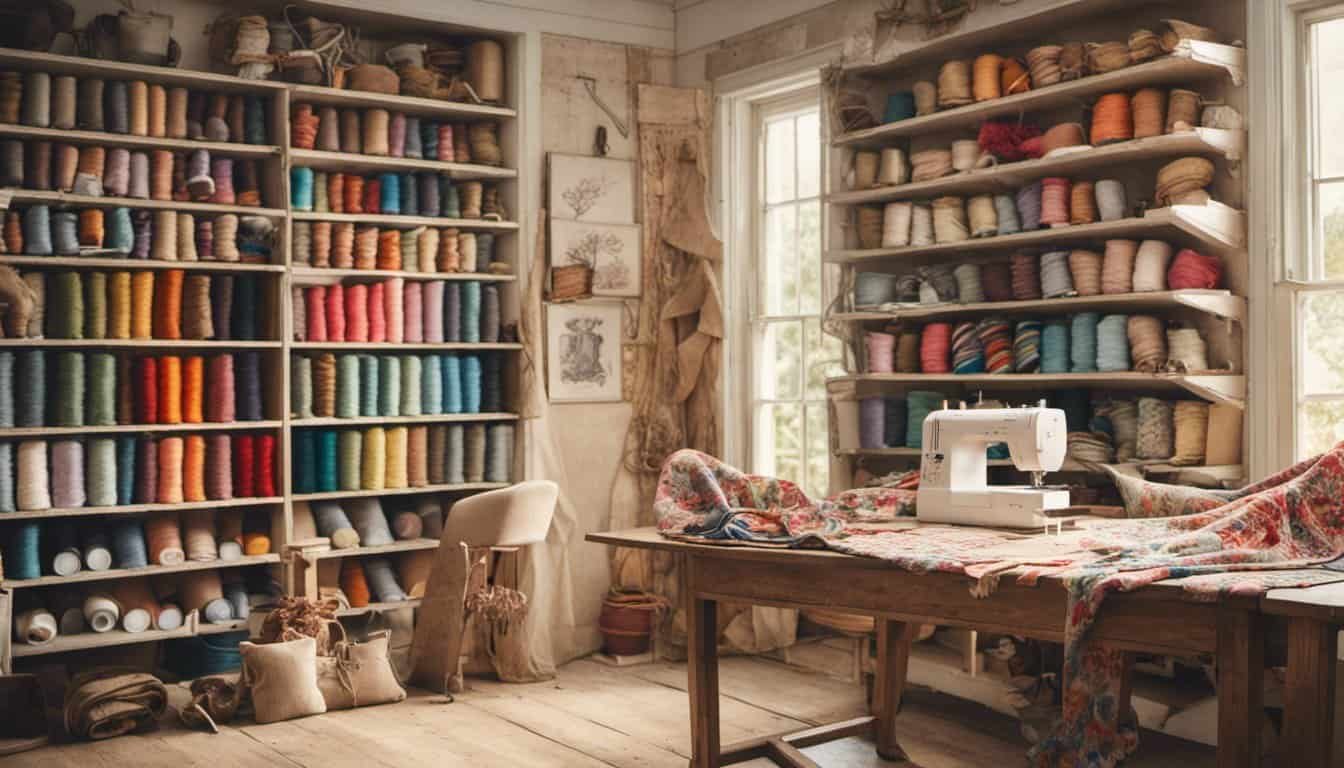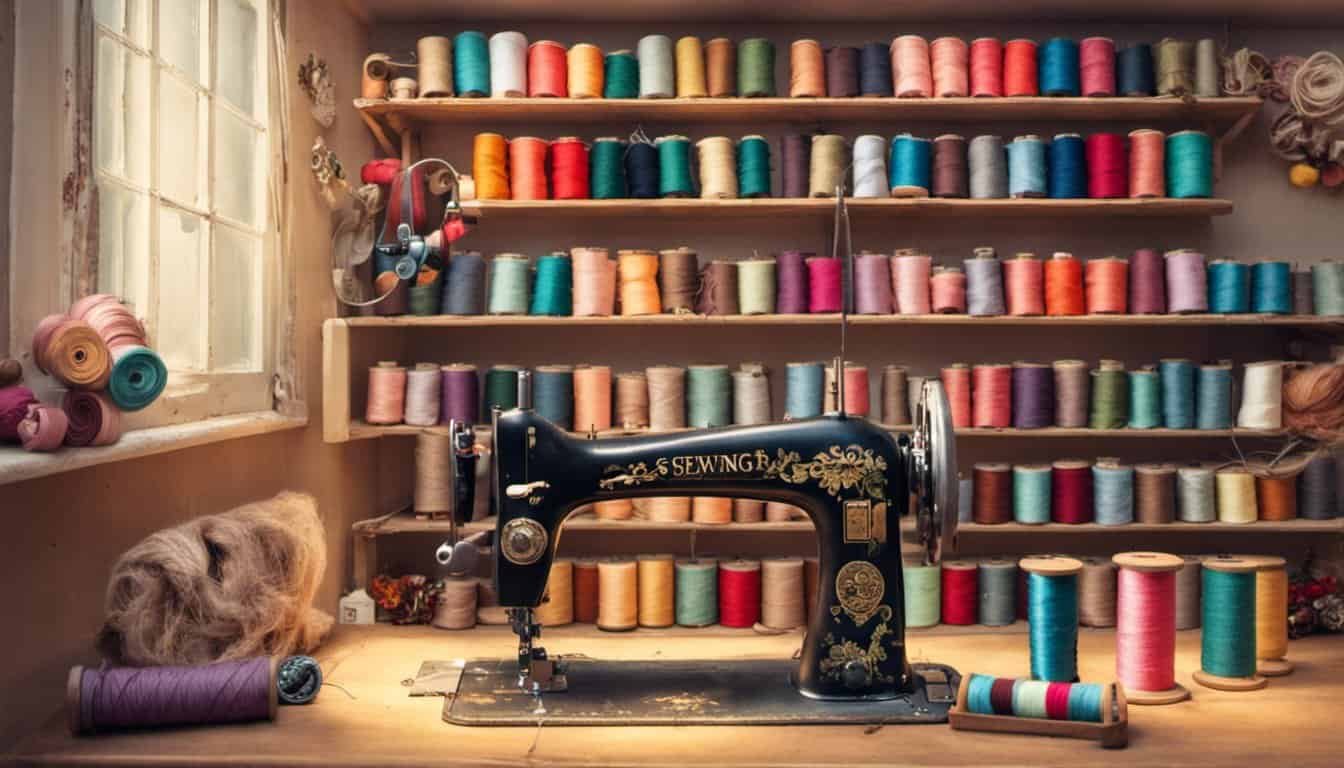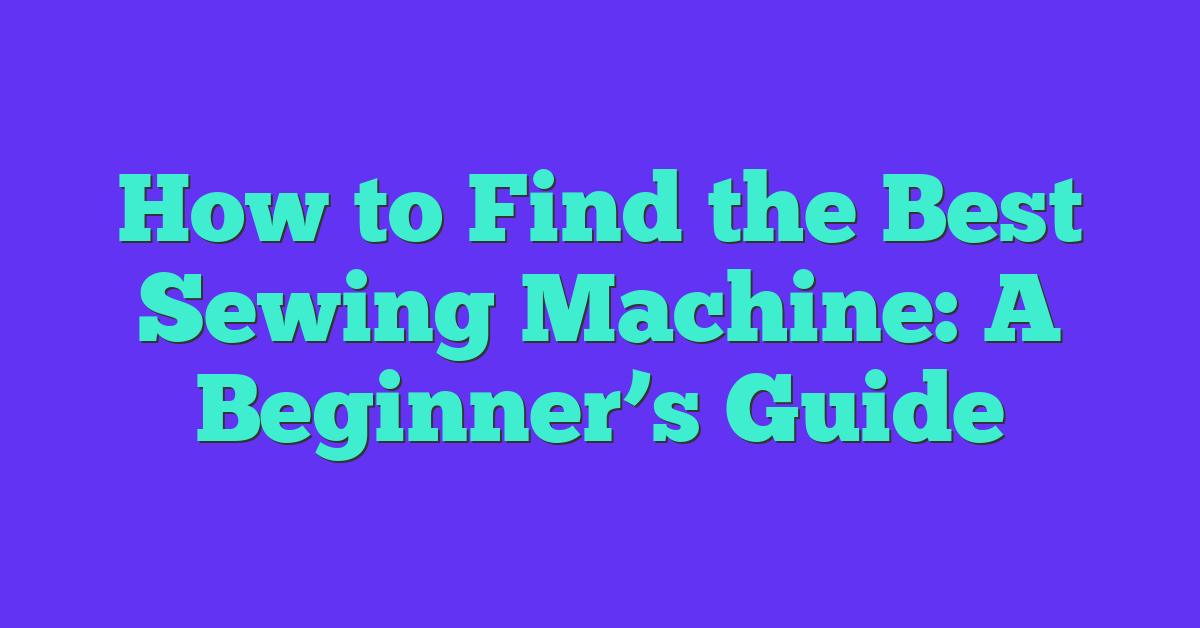I remember the first time I tried the chain stitch—it looked simple, but the effect it created was stunning. Since then, I’ve found it to be a staple in my embroidery toolkit. Mastering the chain stitch can truly elevate your projects, adding texture and elegance with ease.
Whether you’re just starting out or looking to enhance your existing skills, the chain stitch offers versatility and charm. In this article, I’ll share my tips and techniques to help you master this beautiful stitch. Together, we’ll explore how to incorporate the chain stitch into your designs, making your embroidery pieces stand out.
Understanding the Chain Stitch
The chain stitch forms a series of loops resembling a chain’s links, creating fluid lines and decorative patterns.
- Simple construction: Requires minimal thread and basic needle handling, ideal for beginners.
- Versatility: Suitable for borders, outlines, and filling areas in floral, geometric, and illustrative designs.
- Efficiency: Enables quick stitching, enhancing productivity for large projects.
- Durability: Strong connections between loops ensure longevity of the embroidery.
Tools and Materials Needed
Gathering the right tools and materials sets the foundation for mastering the chain stitch. Each item plays a crucial role in creating precise and beautiful embroidery.
Essential Needles
Use embroidery needles with sharp points and large eyes for easy threading. Size 7 or 8 needles suit chain stitch, allowing smooth movement through fabric. Brands like Schmetz and DMC offer reliable options that enhance stitching efficiency.
Choosing the Right Threads
Select high-quality cotton embroidery floss for durability and vibrant colors. Opt for 2-ply threads, which provide strength and a smooth finish. Brands such as DMC and Gutermann offer a wide range of shades to complement your designs.
Best Fabrics for Chain Stitch
Choose tightly woven fabrics like cotton twill or linen for clear, consistent stitches. These materials prevent puckering and maintain the integrity of your chain stitch patterns. Aida cloth, available in various counts, is also an excellent choice for beginners.
Basic Technique of the Chain Stitch
Mastering the chain stitch involves a few straightforward steps that I follow consistently:
- Threading the Needle: I separate two strands of high-quality cotton embroidery floss and thread them through a size 7 needle, ensuring smooth movement through the fabric.
- Starting the Stitch: I bring the needle up through the fabric at my chosen starting point, leaving a small tail on the backside to secure the thread.
- Forming the First Loop: I pull the needle down a short distance away from the starting point, creating a loop on the front side of the fabric.
- Linking the Loops: I insert the needle back into the fabric at the base of the first loop and pull the thread through both the loop and the fabric, forming the first chain link.
- Continuing the Pattern: I repeat the loop and linking process, maintaining consistent tension to create even, fluid chains.
- Ending the Stitch: Once I complete the desired length, I secure the thread by bringing the needle to the backside and making a small knot.
By following these steps, I ensure my chain stitches are uniform and durable, enhancing the overall quality of my embroidery projects.
Common Mistakes and How to Avoid Them
Even the most experienced embroiderers encounter challenges with the chain stitch. Here are common mistakes and tips to help you steer clear of them.
Maintaining Even Tension
I find that inconsistent tension disrupts the uniformity of chain stitches. Hold the floss snugly between your fingers without pulling too tight. Keep your fabric flat and taut as you work. If loops start to vary, adjust your grip to ensure each stitch maintains the same tension, resulting in a smooth, even pattern.
Preventing Thread Breakage
Nothing is more frustrating than a thread breaking in the middle of your project. I prevent this by using high-quality floss suited to my fabric. Keep my needles sharp and free from bends or nicks. Additionally, avoid letting excess thread pile up on the backside by managing the thread length I use. This minimizes the risk of tangles and breaks, keeping my embroidery flowing seamlessly.
Advanced Chain Stitch Techniques
Expanding beyond the basics, advanced chain stitch techniques enhance your embroidery projects with intricate details and unique textures.
Double Chain Stitch
Double chain stitch adds depth and dimension to your designs. To execute it:

- Complete a standard chain stitch loop.
- Instead of linking back to the previous loop, create a second loop alongside the first.
- Ensure both loops are evenly spaced for a uniform appearance.
Combining Chain Stitch with Other Stitches
Integrating chain stitch with other embroidery stitches creates complex patterns and rich textures.
- Chain and Satin Stitches: Outline shapes with chain stitch, then fill with satin stitches for contrast.
- Chain and Backstitch: Use chain stitch for decorative elements and backstitch for outlining, providing structure to the design.
Creating Textured Effects
Texture adds visual interest and tactile quality to embroidery.
- Raised Chain Stitch: Increase thread tension to make stitches stand out, creating a raised effect.
- Layered Chains: Overlap multiple chain stitches in different directions to build texture and complexity.
Varied Thread Colors
Using multiple thread colors enhances the vibrancy and depth of your embroidery.
- Gradient Chains: Transition between shades by gradually changing thread colors within a chain stitch.
- Contrasting Chains: Use complementary colors for chain stitches to make elements pop against the fabric.
Using Different Threads and Materials
Experimenting with various threads and materials introduces new dimensions to your work.
- Metallic Threads: Incorporate metallic floss to add shimmer and highlight specific areas.
- Silk Threads: Utilize silk for its sheen and smooth texture, perfect for elegant designs.
- Variegated Threads: Choose variegated floss for multi-colored chain stitches that create dynamic, rainbow-like effects.
Precision in Tension and Length
Maintaining consistent tension and thread length is crucial for advanced techniques.
- Even Tension: Practice controlling thread tension to prevent bulky or loose stitches, ensuring a smooth finish.
- Appropriate Length: Adjust thread length based on the complexity of the design; shorter lengths work better for intricate patterns, while longer lengths suit larger areas.
Embroidery Stabilizers
« Unlock Professional Sewing: How to Line a Garment with Step-by-Step Instructions
Discover the Secret to Perfect Jackets: How to Sew a Bound Buttonhole Easily »
Using stabilizers supports advanced chain stitching, especially on complex or dense designs.
- Tear-Away Stabilizers: Ideal for temporary support, easily removed after stitching.
- Cut-Away Stabilizers: Provide firm backing for projects requiring extra stability, such as heirloom pieces.
Incorporating Beads and Sequins
Adding beads and sequins to chain stitches elevates your embroidery with sparkle and texture.
- Bead Placement: Sew beads at the ends of chain stitches or along the loops for subtle embellishment.
- Sequin Integration: Combine sequins with chain stitches to create eye-catching patterns and highlights.
Embellishing Borders and Edges
Advanced chain stitching techniques enhance borders and edges, framing your embroidery beautifully.
- Decorative Borders: Use intricate chain patterns like scallops or waves to border your design.
- Edge Accents: Apply chain stitches along fabric edges to prevent fraying and add decorative flair.
Mastering these advanced chain stitch techniques allows you to create sophisticated and visually stunning embroidery projects. Experiment with these methods to push the boundaries of your embroidery skills and achieve professional-quality results.
Creative Applications in Embroidery
Integrating the chain stitch into various embroidery projects expands design possibilities and adds unique textures. Here are several creative ways to apply the chain stitch:

Decorative Borders
Enhance edges with chain stitch to create elegant frames for your designs. Different thread colors complement the main artwork, making the border stand out. For example, a vibrant red chain border highlights a floral motif on a cushion cover.
Monograms and Initials
Personalize items with monograms using the chain stitch. Stitching initials adds a classic touch to towels, shirts, or bags. Contrasting thread colors ensure the initials remain prominent against the fabric.
Filling Patterns
Use the chain stitch to fill specific areas within a design, such as petals in a flower or sections of geometric patterns. This method allows for controlled shading and texture, adding depth to your embroidery piece.
Creating Texture
Incorporate multiple layers of chain stitch to create raised textures and intricate patterns. Varying thread thicknesses achieves different visual effects, adding dimension to your projects.
Combining with Other Stitches
Mix chain stitch with stitches like satin or backstitch to introduce complexity and variety. Outlining shapes with backstitch and filling them with chain stitch enhances the design’s definition and visual interest.

Embellishing Clothing and Accessories
Apply chain stitch to garments and accessories for a personalized touch. Add subtle details to jeans, jackets, or scarves, making each piece unique. For instance, stitching a chain pattern along a pocket edge adds a stylish accent to jeans.
Home Décor Projects
Incorporate chain stitch into home décor items such as pillowcases, tablecloths, and curtains. The continuous loops provide a seamless look that blends well with various interior styles.
Mixed Media Art
Combine chain stitch embroidery with other art forms like painting or applique. This fusion creates multidimensional artwork, allowing for innovative expressions and intricate designs.
Repeating Patterns
Utilize the chain stitch to create repeating patterns that add uniformity across larger projects. Patterns like vines, waves, or abstract lines can be easily achieved, enhancing the overall harmony of the design.
| Application | Description |
|---|---|
| Decorative Borders | Elegant frames using contrasting thread colors. |
| Monograms and Initials | Personalized initials with prominent visibility. |
| Filling Patterns | Controlled shading within specific design areas. |
| Creating Texture | Raised textures and intricate patterns through layered stitches. |
| Combining with Other Stitches | Enhanced definition by mixing chain stitch with satin or backstitch. |
| Embellishing Clothing | Unique accents on garments and accessories like jeans and scarves. |
| Home Décor Projects | Seamless integration into pillowcases, tablecloths, and curtains. |
| Mixed Media Art | Fusion with painting or applique for multidimensional artwork. |
| Repeating Patterns | Uniform repeating patterns like vines or waves for harmonious designs. |
Applying the chain stitch creatively not only improves the aesthetic appeal of your embroidery projects but also allows for personal expression and innovation in your craft.

Tips for Perfecting Your Chain Stitch
Mastering the chain stitch requires attention to detail and consistent practice. Here are some tips to help you achieve flawless results:
1. Maintain Even Tension
Consistent tension ensures uniform stitches. Hold the thread lightly without pulling too tight, allowing loops to form smoothly. If the tension varies, your stitches may appear uneven and disrupt the design’s flow.
2. Use Quality Materials
High-quality embroidery floss and sharp needles make a significant difference. Opt for 2-ply cotton floss for durability and vibrant colors. Sharp needles with large eyes (size 7 or 8) facilitate smooth threading and reduce the risk of thread breakage.
3. Choose the Right Fabric
Select tightly woven fabrics like cotton twill or linen to support the chain stitch’s structure. For beginners, Aida cloth offers various counts, making it easier to see and maintain stitch consistency.
4. Secure Thread Ends Properly
Prevent loose threads by weaving the needle through several previous stitches before trimming. This practice anchors the thread, eliminating the need for knots that can interfere with your design.

5. Keep the Fabric Taut
Using an embroidery hoop keeps the fabric stretched evenly, allowing for precise stitching. Ensure the hoop is tight enough to prevent puckering but not so tight that it warps the fabric.
6. Control Stitch Length
Uniform stitch length contributes to a neat appearance. Measure and practice maintaining consistent lengths, especially when working on intricate patterns or borders.
7. Practice on Scrap Fabric
Before starting your main project, practice the chain stitch on a scrap piece of fabric. This exercise helps you get comfortable with the motion and tension, reducing mistakes on your final piece.
8. Plan Your Design
Sketch your design and determine the placement of the chain stitches. Planning helps in maintaining symmetry and proportion, especially when incorporating the stitch into larger patterns or motifs.
9. Monitor Your Progress
Regularly step back and assess your work. Checking for uniformity and consistency ensures that any issues are identified and corrected early, maintaining the project’s overall quality.

10. Experiment with Variations
While perfecting the basic chain stitch, explore variations like double chain stitches or combining with other embroidery techniques. Experimenting enhances your skill set and adds unique textures to your projects.
By applying these tips, you’ll enhance the precision and beauty of your chain stitch embroidery, making your projects stand out with professional-quality craftsmanship.
Conclusion
Working with the chain stitch has truly transformed my embroidery projects. It’s amazing how such a simple stitch can add so much character and detail to any design. I love experimenting with different colors and textures, seeing each piece come to life with every loop I create.
Embarking on this journey has not only improved my skills but also deepened my appreciation for the art of embroidery. There’s something satisfying about watching your ideas take shape thread by thread. I encourage you to dive in and explore the endless possibilities the chain stitch offers.
Whether you’re a beginner or looking to refine your technique, mastering the chain stitch opens up a world of creative potential. Happy stitching!


















